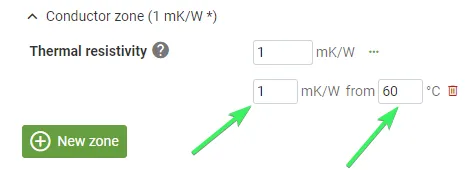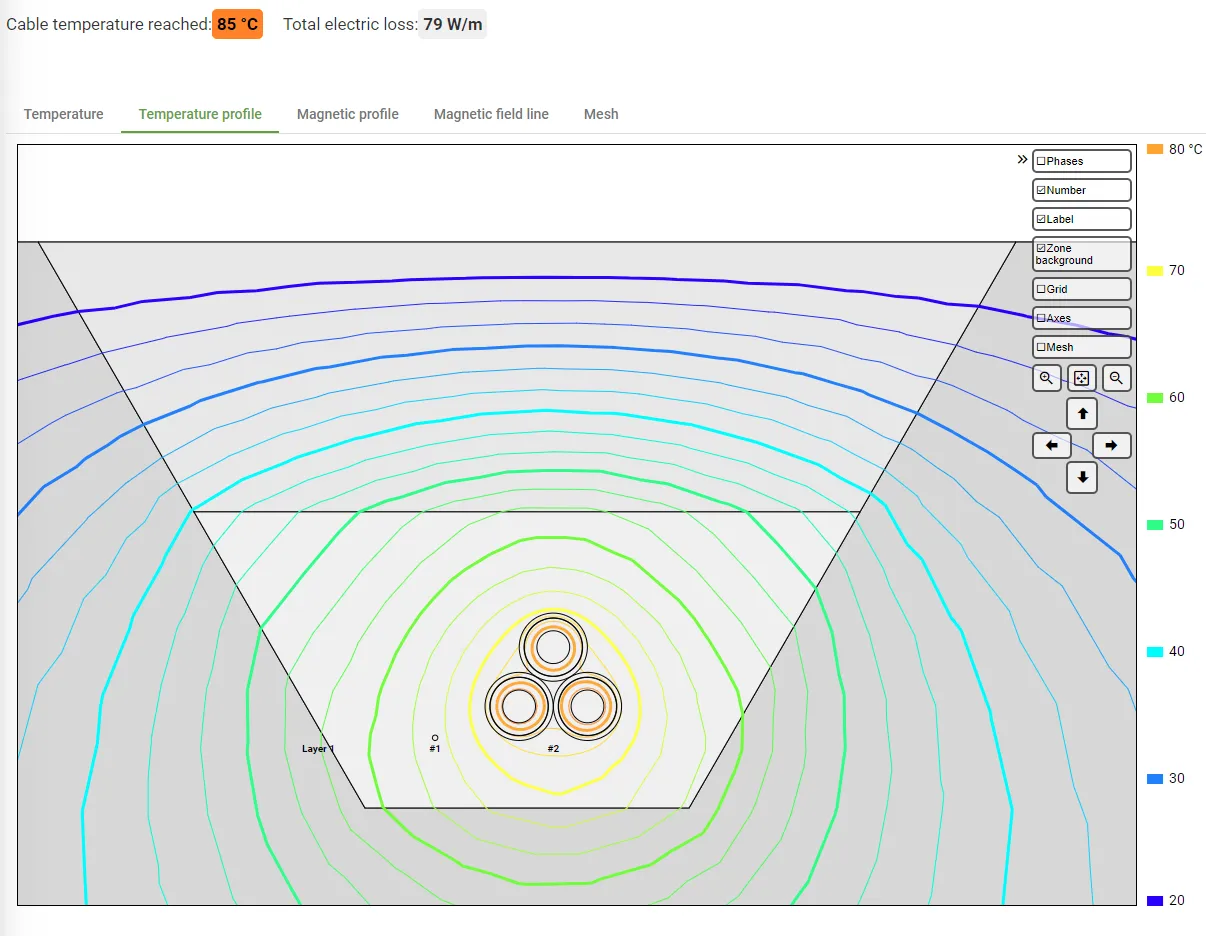Dry Out Limit
To be able to account for moisture migration Grøft Design® has the option to add a “dry out limit” for the different trench zones. The dry out functionality is a step function that depends on the temperature for the trench zones. With that you specify how the thermal resistivity of the masses changes with changing temperature.
To do this, use the option to “add dry out limit”

It is now possible to set the temperature when the masses start to dry out, and the thermal resistivity of the dried out masses.

Drying Out of Masses
Simulation of the drying out of masses:
Effects of Enabling the Dry Out Limit
The pictures below shows the effect of enabling the dry out limit. Aften enabling the dry out limit, the parameters of the dry out limit was changed to 2 mK/W starting from 60 °C. By looking at the temperature profile, the effects of the dry out limit is clearly shown.


When to use Dry Out Limit
Excerpt from NEK TS 583:2023, translated to English:
“With normal load, including one or more peak loads during the day and low load at night, there is little risk of the masses drying out. However, with high, continuous load over extended periods, the risk of this occurring is present, and it increases the higher the surface temperature of the cable is”
Based on this, one can interpret that consideration should be given to the drying out of masses under loads with relatively constant load, for example, power plants and data centers etc.
Excert for Cigre TB 714 “Long term performance of soil and backfill systems”
“Over the long-term, the system load may increase due to gradual increase in energy consumption and the connection of more customers and/or distributed generation, increasing the risk of moisture migration, which may be problematic if not designed for.”
More Information
To further look at the topic it is recommended to review the Cigre TB 714 “Long term performance of soil and backfill systems”. The Norwegian NEK TS 583:2023 also describes and discusses the topic.
Examples of Values for Thermal Resistivity
Examples of values for thermal resistivity can be found here